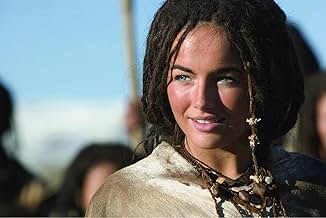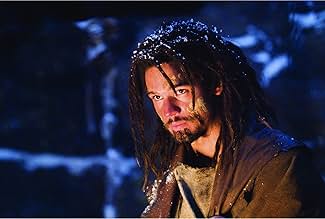I was hoping to like this movie, to give it a better review than most might give it....but I couldn't. In the end, I had to agree with the reviewers here on IMDb, that this movie stinks. It's true.
It's also one of those films that starts off okay, lures you in, and then deteriorates. With 40 minutes to go in the two-hour film, you're ready to walk out but since you've invested 80 minutes you figure, "I might as well see it through the end." The last half hour then becomes like a session at the dentist's office in which you can't wait for the experience to be over.
Credibility is probably the worst aspect of this film. Seeing people 10,000 years ago in buildings that look pretty well-made and would do an architect proud today, and hearing people speak with British and other assorted accents - in the same tribe - for the time and place (Mideast or Northern Africa in 10,000 B.C.) almost makes one laugh out loud in spots.....yet this is supposed to be a serious movie. The special-effects were weak, especially with the saber-toothed tiger which not only looks very fake but is proportionally ludicrous. The mammoths didn't look at hokey, but they moved very woodenly, computer-like. This was mainly the reason I watched. I knew it might be stupid but I thought it might at least be fun with eye-popping effects. No, nothing was eye-popping here.
It was just dumb....and I didn't even get to the story part, if you want to call it that. Actually, that was the worst part of this film. The screenplay was embarrassingly bad. If you want details on the holes in this story and all the things that were impossible but shown here, check out the other reviews.
Folks: you can believe all the negative reviews here on IMDb. They are not lying.



























